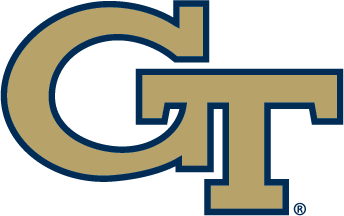May 21, 2015
The following story appeared in the Spring 2015 issue of The Buzz Magazine. Click here to read the entire issue.
By Adam Van Brimmer
Georgia Tech’s “front porch” – the Yellow Jacket athletics department – is more veranda than stoop these days, with success on the field and in the classroom rallying students, alumni, fans and friends to The Flats en masse.
Director of athletics Mike Bobinski anticipates even better days ahead. Now in his third year at Georgia Tech, Bobinski acknowledges upward trends in giving, fan support, academics and, yes, on the fields and courts, too.
“The thing I appreciate so much about what’s happened here is the quality of the student-athletes we have in our program – that’s what makes the front porch concept work,” Bobinski said. “When you have great young people representing you out there, fans and alums appreciate that and respect that. I’ve really seen that come to life so many times in my short time here.”
Bobinski has done his part, too, albeit behind the scenes. He restructured his senior administrative staff, reaching beyond the college athletics ranks for professionals such as his deputy, Brett Daniels, who he hired away from the Dallas Cowboys’ front office. He also named one of the most popular Yellow Jacket athletes of this young century, former basketball star Marvin Lewis, to oversee finances.
A once-in-a-generation season by Georgia Tech’s highest-profile program, the football Jackets, and a sparkling new facility for the basketball teams have boosted the spirit of the Tech faithful as well. That pride has translated to a stronger financial position, with the athletic association endowment growing by more than 10 percent in the last two years and a fiscal year-to-date budget surplus.
“This is a very exciting time for our athletic department, and right now it’s just the tip of the iceberg,” said Theresa Wenzel, Georgia Tech’s associate athletic director and senior woman administrator. “The feeling is we don’t just want to be a place that only sees successes but we also want to be a place where people strive to work for, compete for or represent. That’s the telltale sign that you are at an amazing place to be.”
Yet Bobinski will tell you that beyond the front porch, Georgia Tech’s house still needs work.
STRATEGIZING FOR THE FUTURE
Bobinski took the Georgia Tech job in January 2013 knowing he didn’t know everything there was to know about the Yellow Jacket athletics department.
“You never do, no matter how much due diligence you do or how much inside information you have,” Bobinski said. “You have to take some time to evaluate, to feel things out and to get to know your people.”
What Bobinski has discovered is encouraging and disheartening at the same time. A positive work ethic, pride and drive to excel permeate the athletic department. But an entrenched silo mentality exists and handicaps the Georgia Tech Athletic Association.
“There is a lack or absence of a shared vision and purpose,” he said. “People are working hard to do what they think is right for their area but without a collective sense. And that prevents us from achieving all we are capable of.”
Bobinski is in the midst of tackling the issue. He launched what in the business world is known as a strategic planning process this spring, using a “bottom-up” approach. He’s a believer in the adage “if you don’t know where you are going, any road will take you there” and is asking his staff, from the administration and the coaches to the rank-and-file staff to identify destinations and paths to get there.
The department has a good model to follow: the 2014 Georgia Tech football team.
“The whole became greater than the sum of the parts because they resolved to accomplish something together,” Bobinski said. “They believed it, lived it and relied on each other to get there. We want to duplicate that throughout our whole organization.”
The strategic plan, when completed, will have benchmarks three years and five years out. Those time frames provide allowances for the rapidly changing collegiate landscape and for a natural end-of-the-decade evaluation and assessment.
COUNTABLE BLESSINGS
Bobinski can focus on changing the culture of Georgia Tech athletics in part because he doesn’t face many of the challenges his peers at other universities do in terms of academics, facilities and personnel.
The Yellow Jackets are performing at all-time highs in the classroom, with a mean grade point average of 3.00. Of the 373 student-athletes, 49 percent earn a 3.0 GPA or better. Two Georgia Tech teams were recently recognized to be among the nation’s best in the Academic Progress Rate the NCAA uses to measure success, and the graduation rate, measured as a four-year average, has grown from 75 percent to 81 percent over the last five academic years.
Many of those student-athletes compete or practice in state-of-the art facilities, such as McCamish Pavilion and the Zelnak Center (basketball), Mewborn Field (softball), the Byers Tennis Complex, the Brock Indoor Practice Facility (football) and the Griffin Track and Field Facility.
Russ Chandler Stadium (baseball) recently underwent a clubhouse renovation and the Tom Fazio-designed golf practice range soon will be upgraded and will be known as the Noonan Golf Facility.
The long-term funds established to finance those projects is ahead of fiscal projections, with a balance in excess of $41 million for debt that costs $13.3 million per year to service.
Bobinski also has stability in his coaching ranks, signing many of his program leaders to new contracts during his tenure, including football coach Paul Johnson and women’s basketball coach MaChelle Joseph.
“Georgia Tech is blessed for sure,” Bobinski said. “The common thread here is that while everyone wants to win, how we do it and how we represent Georgia Tech is just as important. Our success there has put us in an enviable position.”
CHANGING LANDSCAPE
The view from Georgia Tech’s front porch is important, too, because what happens across college athletics impacts the Yellow Jackets.
Among the more demanding issues is the imminent move to require the power conference participants to provide full cost-of-attendance scholarships that would cover cost-of-living expenses. An internal study showed Georgia Tech currently has a $2,100 gap per student-athlete, meaning expenses will increase by approximately $500,000 this fall just to cover those costs.
Other issues include concussion protocols, which Georgia Tech has in place, and working with the other power conference schools on legislation meant to “improve the student experience.” That likely means fewer hours for athletic-related activities, Bobinski said.
“Can we adjust that somehow to allow them a chance to participate more in student life?” he said. “At the end of the day, they are the reason we are here. They are Georgia Tech athletics.”









